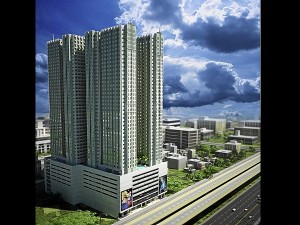Summer is truly here! After spending days in the office, the Easter break was a welcome respite. We opted to stay in Manila, and enjoy quiet, slow and relaxing days at home. During a drive around town with our children, we talked about what summer meant: no school, sleepovers, ice candy, twin-popsies, sand, swimming, sunblock, beach umbrellas, a frappuccino, an air-conditioned room. Everything related to the heat of the summer sun of course!
The largest source of energy, responsible for fueling our existence brings us many benefits but it can also, in excess, be hurtful and damaging. And that is why shelter lists as one of man’s greatest needs—protecting ourselves from the natural elements is a must for survival.
When we define our shelter, we speak of it as not only the roof above our heads, but everything else that sits underneath it makes everyday living possible. During the humid yet scorching tropical summer heat, we find that many things within our shelter respond to, or have to be protected from, the sun’s heat. Let’s explore the inner (and outer) workings that are affected by our precious sun, its warmth and its sunlight:
- Your roof is your best weapon against the sun’s heat. We put so much effort controlling the ingress of heat into the other areas of our house, but we do very little for our roofs. Our indigenous cogon grass did wonders because it was thickly piled on, and absorbed all the sun’s heat. Remember too that dark colors take in heat, which it releases at night. It wouldn’t hurt to keep your roof in a light tone to promote the reflectance of light and heat.
- The sun’s heat is trapped and builds up in spaces that have no ventilation. It is very important to have operable doors and windows for indoor air to be replenished, allowing warm air to exit.
- Clear glass windows (no tint nor film treatment) bring in a lot of heat, and if there is little air circulation, it will turn your indoor space into virtual pressure cooker. For heat not to accumulate, the glazing must be treated against the hot rays of the sun, and of course, windows must be made operable for a continuous exchange of air.
- Fabric colors will fade under constant exposure to the sun. Most prone are natural dyes or chemical dyes on natural fabric. Thai silks, for example, still struggle to keep their color when under prolonged exposure to sunlight. Use “UV Rated” fabrics, designed for outdoor use. And remember that even indoor furniture, when too close to sunlight, will be prone to some color fading.
- Materials will change color (usually turning yellow), lose their tensile strength and turn brittle under constant exposure to UV rays. Even furniture pieces that are not hit directly but are located quite close to a window or opening can suffer from this exposure. This is more particular to synthetic materials like plastics, but also holds true to natural ones, like fabrics. In other countries, there are protective sprays that can be purchased at hardware stores or home depots, and spray applied to the vulnerable surfaces for protection from UV rays.
- Hard surfaces for outdoor paving absorb heat, and the darker the material, the more heat it will absorb. (Speaking of summer, notice how you can walk on the sands of Boracay with no slippers and not scald your feet. The same principle applies.) Stones and tiles absorb the sun’s heat, and because warm air moves upward, it will breathe into your adjacent spaces rather than dissipate into the ground.
I always look to the sun as nature’s greatest gift. When you imagine a world with no sun, you imagine a world with no light and no color. And literally, a world with no life.
Contact the author through designdimensions@abi.ph or through our Asuncion Berenguer Facebook account.


